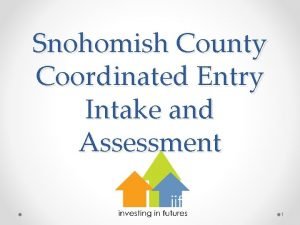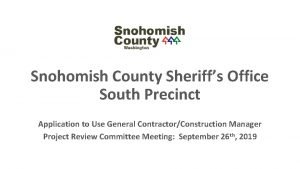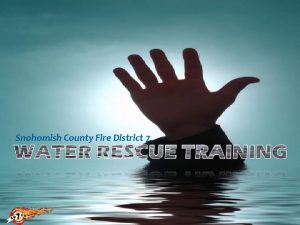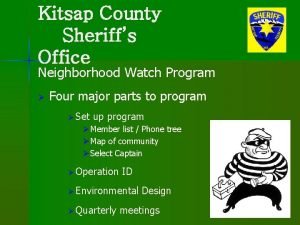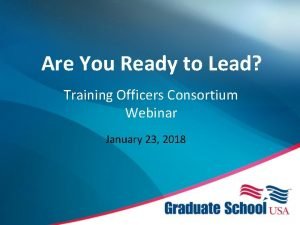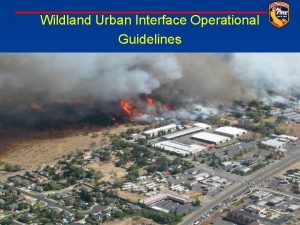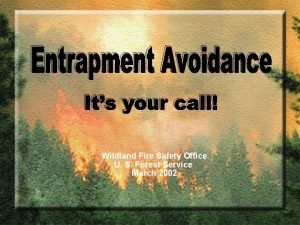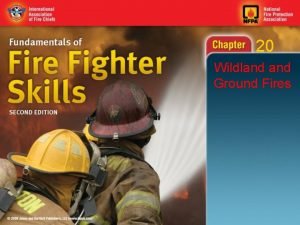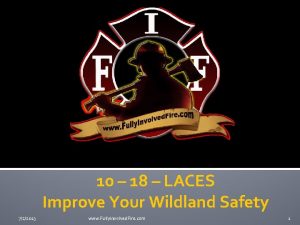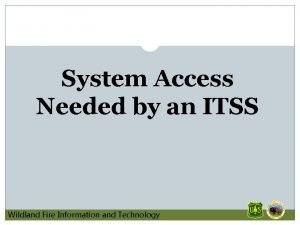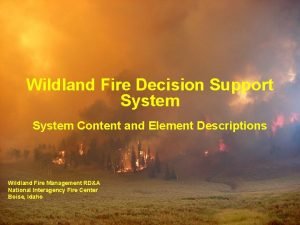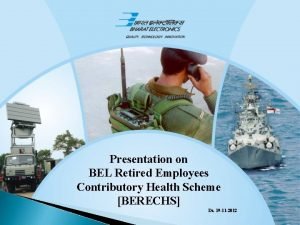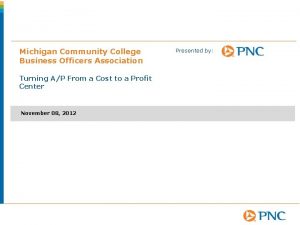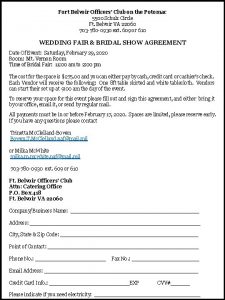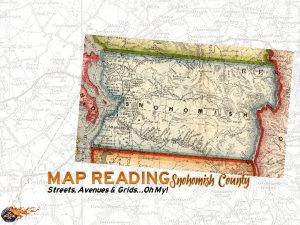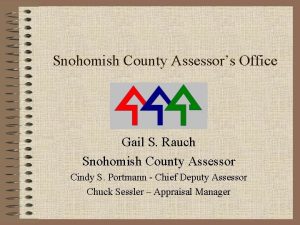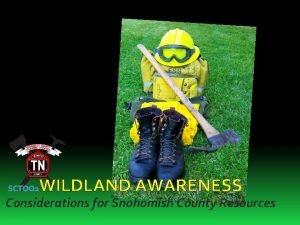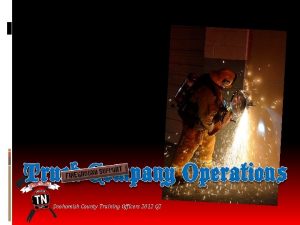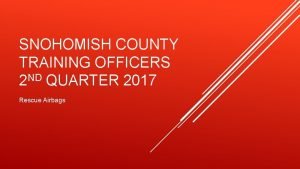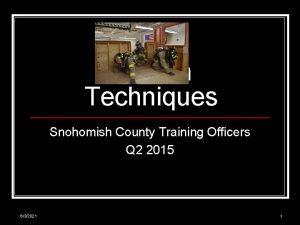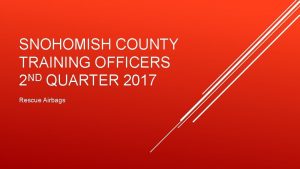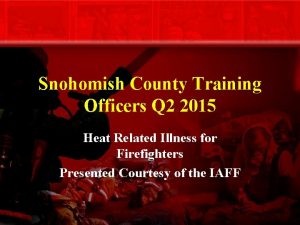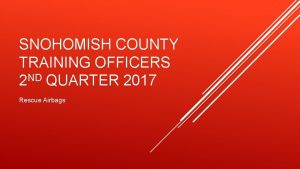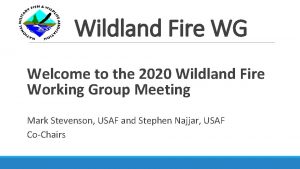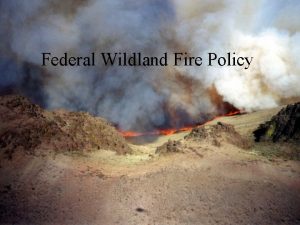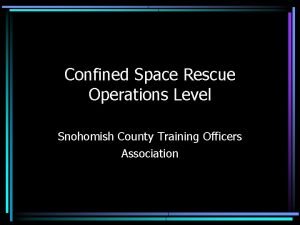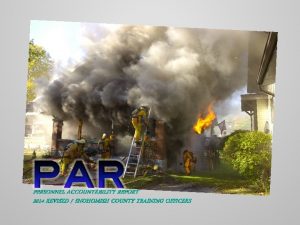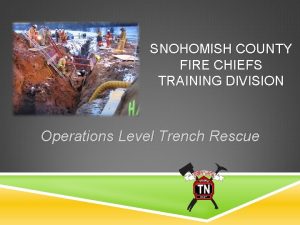SNOHOMISH COUNTY TRAINING OFFICERS 2013 WILDLAND TRAINING This















- Slides: 15

SNOHOMISH COUNTY TRAINING OFFICERS 2013 WILDLAND TRAINING This training meets the WAC 296 -305 Annual Training Requirements. This training does not qualify for NWCG Annual Wildland Refresher, such training must include the WAC requirements as well as NWCG requirements and must be administered by a Single Resource Boss or higher certified instructor. If your department does Annual NWCG Wildland Refreshers that training will supersede this training.

T. O. C. • WAC Requirements • Unit Typing • Ten Standard Fire Orders • 18 Watch out Situations • Four Common Denominators of Tragedy Fires • NWCG Performance Tasks

WAC REQUIREMENTS • WAC 296 -305 -07019 • This section shall apply to all personnel and agencies called on to provide services at any fire defined as a “Wildland Fire. ” • WAC defines a wildland fire: A fire burning in natural vegetation that requires an individual or crew(s) to expend more than one hour of labor to confine, control and extinguish. Agencies may substitute crews to avoid the one hour bench mark or increase crew size to complete the job in less than one hour. • This one hour mark includes overhaul as well for a vegetation fire, if your department provides this service to your community at a minimum this training must be completed. • This sections shall not apply to suppression actions taken on fires prior to meeting the definition of a “wildland Fire. ” • If the fire is extinguished and overhauled prior to one h our, then this rule does not apply,

WAC REQUIREMENT’S CONT. • Suppression personnel assigned to a wildland fire shall be trained to a NWCG Firefighter Level II or a comparable class of training. • “Comparable” training shall be determined by the employer. • (Note: NWCG curriculum is recommended not required, however this is the only national recognized training) • At a minimum training must cover items in this section • Supervisory Personnel shall be trained to a level commensurate to the position and responsibility they are to assume. • All personnel will be trained and capable of demonstrating competency in utilizing the incident command system. • All suppression personnel shall annually review the SOP’s. WAC 296 305 Appendix D • Also if fire departments have wildland fire shelters they must train on their use annually.

UNIT TYPING • Classifications of pumpers for wildland firefighting. • • • Pumper/Brush Engine • ICS Type 7 GPM 20 Tank Capacity 125 • ICS Type 6 GPM 50 Tank Capacity 200 • ICS Type 5 GPM 50 Tank Capacity 500 • ICS Type 4 GPM 70 Tank Capacity 750 • ICS Type 3 GPM 20 Tank Capacity 300 Pumper/Class A Rated • ICS Type 2 GPM 500 Tank Capacity 400 • ICS Type 1 GPM 1000 Tank Capacity 400 Note* - There are minimum equipment and personnel requirements to meet qualifications.

TEN STANDARD FIRE ORDERS • Think of the fire orders as rules, we cannot break the rules we must follow the rules. • Review the 10 fire orders with your company and ensure everyone has a good understanding of the fire orders. • Once you have reviewed the fire orders review this NIOSH LODD report and discuss the fire orders that were and were not maintained; http: //www. cdc. gov/niosh/fire/pdfs/face 201110. pdf Or review LODD 201110 at the end of the presentation.

TEN STANDARD FIRE ORDERS • Fire Behavior 1. Keep informed on fire weather conditions and forecasts. 2. Know what your fire is doing at all times. 3. Base all actions on current and expected behavior of the fire. • Fireline Safety 4. Identify escape routes and safety zones and make them known. 5. Post lookouts when there is possible danger. 6. Be alert. Keep calm. Think clearly. Act decisively. • Organizational Control 7. Maintain prompt communications with your forces, your supervisor and adjoining forces. 8. Give clear instructions and insure they are understood. 9. Maintain control of your forces at all times. • If 1 -9 are considered, then. . . 10. Fight fire agressively, having provided for safety first.

18 WATCH OUT SITUATIONS • Review the 18 watch out situations with your company and ensure everyone has a good understanding of the watch out situations. • The watch out situations happen, they are simply situations/events that we need to watch out for. We should look at watch out situations as things that are trigger points. • Once you have reviewed the watch out situations, review this NIOSH LODD report and discuss the watch out situations that were present; http: //www. cdc. gov/niosh/fire/pdfs/face 200440. pdf Or review LODD 200440 at the end of the presentation.

18 WATCH OUT SITUATIONS Fire Behavior 1. Keep informed on fire weather conditions and forecasts. 2. Know what your fire is doing at all times. 3. Base all actions on current and expected behavior of the fire. Fireline Safety 4. Identify escape routes and safety zones and make them known. 5. Post lookouts when there is possible danger. 6. Be alert. Keep calm. Think clearly. Act decisively. Organizational Control 7. Maintain prompt communications with your forces, your supervisor and adjoining forces. 8. Give clear instructions and insure they are understood. 9. Maintain control of your forces at all times. If 1 -9 are considered, then. . . 10. Fight fire agressively, having provided for safety first.

L. C. E. S. • Look Outs • Communications • Escape Route • Safety Zones • We SHALL ensure that LCES is ALWAYS maintained!!!!!!!

FOUR COMMON DENOMINATORS OF TRAGEDY FIRES • These are the 4 most common denominators of fires that end in tragedy. • Small fires or relatively quiet area of large fires. • Light Fuels • Steep Slopes • Change in wind speed and/or direction

NWCG PERFORMANCE TASKS • Members should be compentent in understanding department policy on wildland firefighting. • What each agency policy is for extended fire attack. • • Inmate orientation • • How do we performs our tasks on the fire line Tools and equipment • • Understanding working with inmates. Fire line organization • • Extended fire attack is a fire that goes past one operartional period. Review your wildland tools and equipment Firing devices • If you have firing devices ensure that you have proper training prior to use.

NWCG PERFORMANCE TASKS CONT. • Wildland water delivery systems and pump use • • Wildland Fire Behavior • • Review procedure for size up and initial attack Fire line construction • • LCES, 10’s, 18’s, Common Denominators Size up and initial attack • • S 190 can be reviewed for introduction to wildland fire behavior Fire line safty • • Review ways that we have to move water on a wildland fire Direct Vs. Indirect Wildland fire investigation • Follow Department Procedures for investigation

NWCG PERFORMANCE TASKS CONT. • Structure Protection • Review structure protections watchout situations that can be found in the IRPG. • Use of foam • Mop Up • Cold trailing, ensure the fire is out, set up mop up guidelines. • Compass and Map Use • Review use of maps or GPS use. • Radio Communications • Incident Command System • Basic First Aid • HAZMAT Awareness

THE END • If your department conducts annual wildland fire training using NWCG please feel free to use information from this training to complete your training. • If you have questions regarding wildland firefighting training and/or this power point please contact Getchell Fire. Presentation shared by Getchell FD
 Coordinated entry snohomish county
Coordinated entry snohomish county Snohomish county south precinct
Snohomish county south precinct Snohomish county fire district 7
Snohomish county fire district 7 Kitsap crime watch
Kitsap crime watch Training officers consortium
Training officers consortium Firescope structure triage
Firescope structure triage Trigger points wildland fire
Trigger points wildland fire Pincer fire attack
Pincer fire attack Ten standard firefighting orders
Ten standard firefighting orders Wildland fire ftp
Wildland fire ftp Wildland fire decision support system
Wildland fire decision support system Biocleanse plus
Biocleanse plus Bel retired employees association
Bel retired employees association Community college business officers
Community college business officers Fort belvoir officers club
Fort belvoir officers club Chief instructional officer
Chief instructional officer
